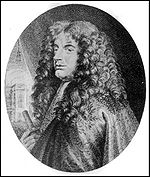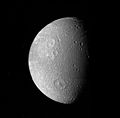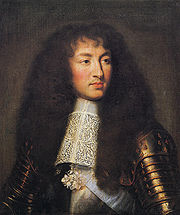
Sidera Lodoicea
Encyclopedia

Giovanni Domenico Cassini
This article is about the Italian-born astronomer. For his French-born great-grandson, see Jean-Dominique Cassini.Giovanni Domenico Cassini was an Italian/French mathematician, astronomer, engineer, and astrologer...
to the four moons of Saturn
Saturn's natural satellites
The moons of Saturn are numerous and diverse, ranging from tiny moonlets less than 1 kilometre across, to the enormous Titan, which is larger than the planet Mercury. Saturn has 62 moons with confirmed orbits, fifty-three of which have names, and only thirteen of which have diameters larger than 50...
discovered by him in the years 1671, 1672, and 1684 and published in his Découverte de deux nouvelles planètes autour de Saturne in 1673 and in the Journal des sçavans
Journal des sçavans
The Journal des sçavans , founded by Denis de Sallo, was the earliest academic journal published in Europe, that from the beginning also carried a proportion of material that would not now be considered scientific, such as obituaries of famous men, church history, and legal reports...
in 1686. These satellites are today known by the following names, given in 1847:
- IapetusIapetus (moon)Iapetus ), occasionally Japetus , is the third-largest moon of Saturn, and eleventh in the Solar System. It was discovered by Giovanni Domenico Cassini in 1671...
or Saturn VIII, discovered October 25, 1671 - RheaRhea (moon)Rhea is the second-largest moon of Saturn and the ninth largest moon in the Solar System. It was discovered in 1672 by Giovanni Domenico Cassini.-Name:Rhea is named after the Titan Rhea of Greek mythology, "mother of the gods"...
or Saturn V, discovered December 23, 1672 - TethysTethys (moon)Tethys or Saturn III is a mid-sized moon of Saturn about across. It was discovered by G. D. Cassini in 1684 and is named after titan Tethys of Greek mythology. Tethys is pronounced |Odysseus]] is about 400 km in diameter, while the largest graben—Ithaca Chasma is about 100 km wide and...
or Saturn III, discovered March 21, 1684 - DioneDione (moon)Dione is a moon of Saturn discovered by Cassini in 1684. It is named after the titan Dione of Greek mythology. It is also designated Saturn IV.- Name :...
or Saturn IV, discovered March 21, 1684
 |
 |
 |
 |
The name Sidera Lodoicea means "Louisian Stars", from Latin sidus "star" and Lodoiceus, a nonce
Nonce word
A nonce word is a word used only "for the nonce"—to meet a need that is not expected to recur. Quark, for example, was formerly a nonce word in English, appearing only in James Joyce's Finnegans Wake. Murray Gell-Mann then adopted it to name a new class of subatomic particle...
adjective coined from Lodoicus, one of several Latin forms of the French name Louis (reflecting an older form, Lodhuwig). Cassini intended the name to honor King Louis XIV of France, who reigned from 1643 to 1715, and who was Cassini's benefactor as patron of the Paris Observatory
Paris Observatory
The Paris Observatory is the foremost astronomical observatory of France, and one of the largest astronomical centres in the world...
, of which Cassini was the director.
The name was modelled on Sidera Medicea, "Medicean stars", the Latin name used by Galileo
Galileo Galilei
Galileo Galilei , was an Italian physicist, mathematician, astronomer, and philosopher who played a major role in the Scientific Revolution. His achievements include improvements to the telescope and consequent astronomical observations and support for Copernicanism...
to name the four Galilean satellites
Galilean moons
The Galilean moons are the four moons of Jupiter discovered by Galileo Galilei in January 1610. They are the largest of the many moons of Jupiter and derive their names from the lovers of Zeus: Io, Europa, Ganymede and Callisto. Ganymede, Europa and Io participate in a 1:2:4 orbital resonance...
of Jupiter
Jupiter
Jupiter is the fifth planet from the Sun and the largest planet within the Solar System. It is a gas giant with mass one-thousandth that of the Sun but is two and a half times the mass of all the other planets in our Solar System combined. Jupiter is classified as a gas giant along with Saturn,...
, in honor of the Florentine house of Medici
Medici
The House of Medici or Famiglia de' Medici was a political dynasty, banking family and later royal house that first began to gather prominence under Cosimo de' Medici in the Republic of Florence during the late 14th century. The family originated in the Mugello region of the Tuscan countryside,...
.
The following contemporary (1686) notice records Cassini's choice of name, and explains his rationale for the same:


